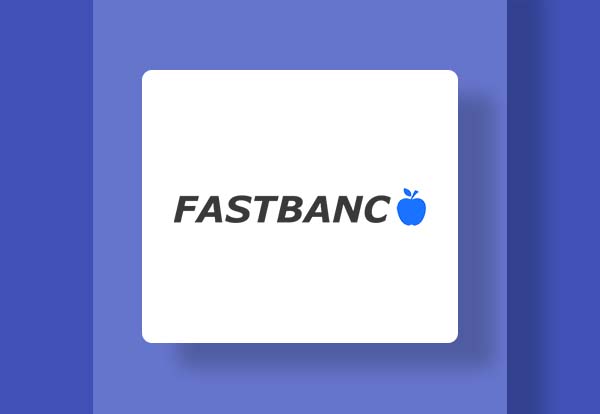What is GPT?
GPT (Generative Pre-trained Transformer) is a natural language model that employs deep learning neural networks to generate natural language text . It is a type of deep learning model that is trained using large amounts of text without any explicit label information.
It is characterized by using textual data sets to learn patterns and language features and generate coherent and relevant responses . Its database is from 2020, but it has constant updates, which allow it to be increasingly "intelligent" and respond fluently. The GPT-4 Chat, in fact, is capable of analyzing and reinterpreting the data it has stored to provide precise and contextualized responses according to what is asked of it.
GPT-4 vs. ChatGPT
Analyzing GPT-4 vs ChatGPT, we have, first of all, that GPT-4 is the next version of the GPT series , which is expected to be larger and more complex than GPT-3 and, therefore, capable of generating even more fluid text. It can even read images and solve difficult problems faster, thanks to its broader general knowledge.
ChatGPT, on the other hand, is the current model used by OpenAI , although this is just a chat-like interface where you send your requests and it generates responses that try to be as coherent as possible. Here are some specific differences between the two models:
-
Size and complexity: GPT-4 is expected to have around 10 trillion parameters, making it larger and more complex than any language model currently in existence. ChatGPT, on the other hand, has fewer parameters and is therefore less complex.
-
Understanding capabilities: GPT-4 will have a better ability to understand the context and intent behind the text it generates, allowing it to generate even more relevant and accurate text than ChatGPT.
-
Customization: Users will be able to adjust the model to suit their specific needs.
The biggest differences between GPT-3.5 and GPT-4 lie in their performance and application capabilities. While GPT-3.5 already offers remarkable performance in code and natural language processing, GPT-4 surpasses this model with improved reasoning and problem-solving capabilities.
Chat GPT 3 only accepts written orders or requests, while Chat GPT 4 supports input or entry of orders through text and images.
More "technical" differences
ChatGPT-3.5 vs GPT-4: Key differences between OpenAI models, explained .
GPT-4: OpenAI's revolutionary model that combines text processing and vision.
Description: In this article, we take a deep dive into the novel capabilities of GPT-4, OpenAI’s latest release. We discuss how it outperforms its predecessor ChatGPT-3.5 by incorporating the ability to process visual input, offer more creative and confident responses, and provide enhanced context. We discuss the underlying technical advancements in this advanced multimodal model.
1. OpenAI's Generative Transformer (GPT) Pretrained Models
GPT models are based on the Transformer architecture introduced by Google in 2017, which has proven to be highly effective for natural language tasks. These models are trained using huge datasets and use a technique called “attention” to assign importance to different parts of the text during training and generation.
GPT-4 is the latest member of this family and features significant improvements over its predecessors such as ChatGPT-3.5.
2. The evolution from ChatGPT-3.5 to GPT-4: Key improvements
2.1 Multimodal analysis: Joint processing of text and images
Compared to ChatGPT-3.5, which only accepts text queries, GPT-4 features a multimodal architecture capable of processing both textual and visual inputs. This capability is achieved through an integrated combination of Convolutional Neural Networks (CNN) and Transformer, allowing the model to extract relevant features from images and process them together with textual information.
This multimodal ability opens up a range of new applications, from describing images to answering questions based on visual data or analyzing mixed content such as memes.
2.2 Greater creativity and adaptability
GPT-4 has significantly improved its ability to provide more creative responses compared to ChatGPT-3.5 due to a combination of technical factors:
-
Exponential increase in parameters: GPT-4 could have trillions of parameters, allowing it to handle even more complex tasks.
-
Increased accuracy and relevance: This model is likely to understand contextual relationships between words, phrases, and arguments even more accurately.
-
Reducing bias: A key concern in AI is the bias inherent in machine learning. GPT-4 could be designed to address these issues more effectively.
These improvements translate into text generation highly adapted to the user's style and the solution of complex problems that require a high degree of ingenuity and innovation.
2.3 Advanced security measures
OpenAI has implemented advanced measures in GPT-4 to ensure safer and less biased responses. These measures include supervised training along with techniques such as “shock mitigation” to avoid undesirable behavior during interactive use of the model.
Additionally, architectural adjustments have been made to improve the detection and removal of toxic or disallowed content, significantly reducing the generation of inappropriate responses compared to ChatGPT-3.5.
2.4 Enhanced context and long-term memory
GPT-4 offers a significantly larger window and context size than ChatGPT-3.5, which is reflected in its ability to remember important details during a chat session and follow previously provided instructions.
These improvements are achieved through advancements in the Transformer architecture and model training, allowing GPT-4 to process longer sequences more easily and improve its performance by retaining relevant information across extended conversations.
3. Conclusions
The release of GPT-4 represents a major milestone in the evolution of OpenAI’s Transformer pre-trained generative models, thanks to new multimodal capabilities and significant improvements in creativity, safety, and context handling.
The inclusion of multimodal processing to process both text and images opens up a wide range of new and exciting applications, ranging from describing images to answering questions based on visual data or analyzing mixed content such as memes. Additionally, improvements in creativity and adaptability allow the model to generate highly personalized and innovative responses to solve complex problems.
The advanced measures implemented by OpenAI against bias and inappropriate content are also very important, as trustworthiness and safety are crucial aspects for any conversational model. In addition, improved context handling allows GPT-4 to retain important details during a chat session and follow previous instructions more easily.
Overall, GPT-4 promises to transform the landscape of natural language and image-based applications.
Prices
GPT-4 is now available to everyone. Specifically, there are two ways to experiment with OpenAI's latest developments: First, subscribe to the ChatGPT Plus service, which costs $20 per month and allows you to interact with the new engine's options.
ChatGPT pricing varies. There is a free subscription and a paid subscription that costs $20 per month.
Advantages over the free version
ChatGPT Plus is a paid version of ChatGPT . The idea behind this paid version is to favor users who are using the system the most. Obviously, in exchange for their payment they can enjoy having some exclusive benefits when using this chat system.
This new subscription plan, launched on February 1 in the United States and extended to users outside the country on February 10, is priced at US$20 per month (about 18.20 euros at the current exchange rate).
First, one of the general benefits of this payment model is to be able to “help support the availability of free access to as many people as possible.” In this way, the first thing that is done is to provide a kind of patronage for the rest of the users.
Of course, in addition to offering this access to as many people as possible, the monthly payment of 18.20 euros also has a number of benefits:
-
General access to ChatGPT, even during peak times . The free version is often subject to peak traffic and can become overloaded. It may leave you without service in the middle of a response or prevent you from logging in.
-
Faster response times . Although we are usually quick to respond, when our servers are overloaded, we are likely to experience slower typing or cut off responses.
-
Priority access to new features and improvements . Not all new features are released to free users and it may take several months for them to be added to the free version.
Disadvantages of ChatGPT
Now that we know the good stuff, let's look at the side that needs to be more careful. Especially if you are considering integrating ChatGPT technology with your company:
-
Everything written in ChatGPT is recorded, so developers could have access to it to continue training the artificial intelligence chat. For this reason, it is recommended not to include personal, dangerous or criminal information.
-
It is unstable, due to the high demand for ChatGPT it is normal to enter the system and find a message informing that it is down or that it will be available soon.
-
In different topics the content you generate may not be accurate or correct, especially with names and some concepts, so it is not recommended to create content without any kind of check or correction.
-
It may generate misinformation.






